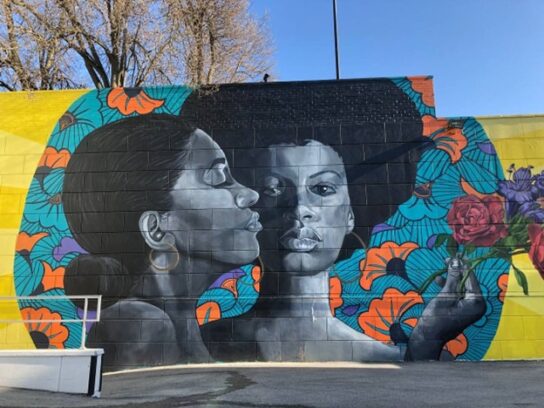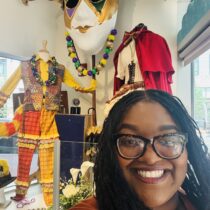
Every time I travel in the county, I’m struck by the beauty of the area. Frescoes curling up corner streets, mosaics flourishing between shops. Statuesque animals prowling their plaza, or the beautiful shades of light streaming through stained glass. The artworks become iconic to the neighborhoods, inseparable from the experience of being there. I’m so glad my area has artistic and architectural fingerprints. Because it is not just foreign destinations – Montgomery County has character too.
This is in large part thanks to support from the Maryland State Arts Council. The Council invests in Arts & Entertainment Districts (A&ED) to boost local economies, celebrate community identity and heritage, empower residents through the arts, and expand access to creative experiences. Communities in Maryland with a five-year plan that aligns with these goals can apply for A&ED certification twice a year.
Montgomery County has three such districts: Bethesda, Silver Spring, and Wheaton. In this blog series, we will explore each district’s physical and spiritual creative imprints: public art, creative organizations, and their indefinable spirit.
Why do Art Districts matter?
To answer this question, one must first answer a fundamental question: is art important? For our purposes, public art. Is public art important? Art can be expensive and time consuming to create. Surely, hours of labor and resources are better put into functional architecture, community support programs, and other ventures.
Except, then real life examples come to mind. Cement buildings brutalist. A sidewalk with visually identical houses stretching for a mile, hearth and home soulless but for the individual markings of their tenants. Without beauty and music, local hot spots feel a lot less hot.
People need to create. Whether it’s a lunch dish or arranging a workspace, there is an ineffable urge in all of us to alter our surroundings to fit us. To suit our needs. To decorate, to celebrate life. To mark, ‘Here we are.’ ‘I am here.’ This is where art intersects with our public lives.
Public art confirms we are human. If beauty celebrates the visceral experience, public art then commemorates human potential. Here there used to be a mound of dirt, and now there’s stained glass! Here people came together to tell their story. Here hands captured poetry into concrete and wood. Here someone asked, ‘What can one person create?’ Look what we can do, what we can be.
In some ways, public art normalizes art’s transformative power & human imagination and builds communal identity.
This is just one avenue of Art and Entertainment Districts. The districts promote music, theatre, and education in the arts as well. Art Districts create, preserve, and foster such art experiences in their community, as well as fostering economically viable futures for creatives.



Comments are closed.